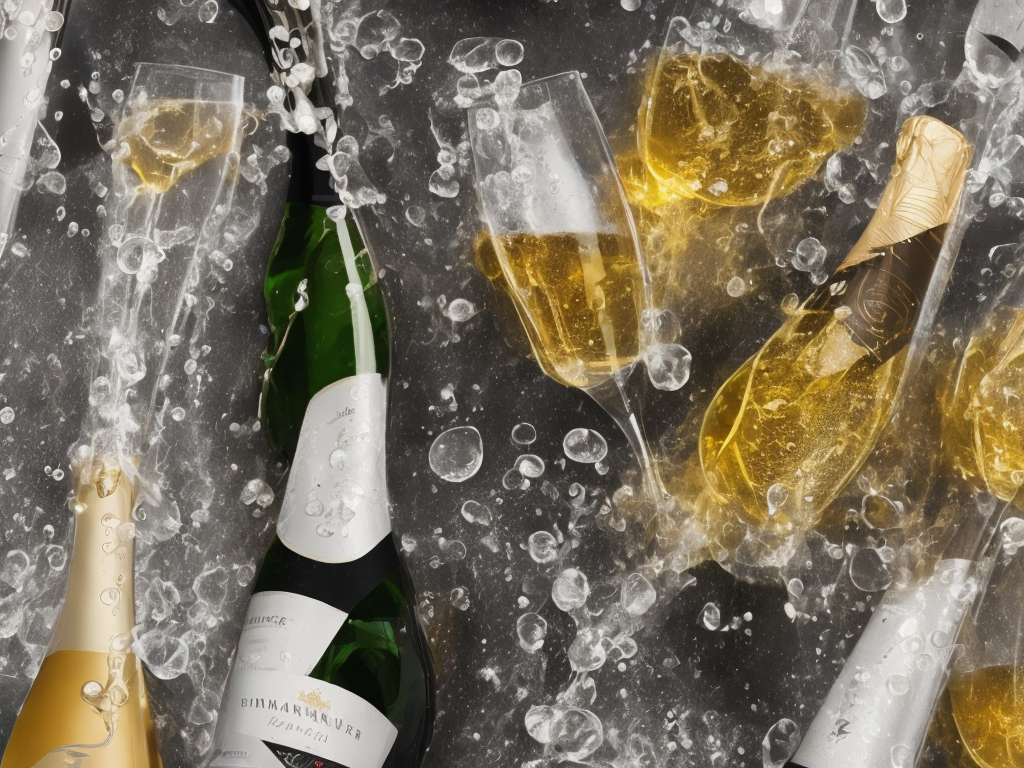
Champagne and sparkling wine are often used interchangeably to refer to any fizzy wine, but in reality, there are several key differences between the two. From the region of production to the winemaking process, these distinctions contribute to the unique qualities and higher price tag of Champagne. In this article, we will delve into the core differences between Champagne and sparkling wine.
One of the primary distinctions between Champagne and sparkling wine lies in their geographical origins. Champagne, true to its name, is exclusively produced in the Champagne region of France. This region, located about 90 miles northeast of Paris, has a unique climate and soil composition that are ideal for growing the grapes used in Champagne production. On the other hand, sparkling wine can be produced in various regions across the globe, including California, Italy, Spain, and Australia. The diversity in terroir and winemaking techniques results in a wide range of flavors and styles of sparkling wine.
Another crucial difference is the grapes used in the production of Champagne versus sparkling wine. The traditional Champagne blend consists of three grape varieties: Chardonnay, Pinot Noir, and Pinot Meunier. Chardonnay brings elegance and finesse, while Pinot Noir adds body and structure, and Pinot Meunier contributes fruitiness and freshness. This combination of grapes results in a harmonious and complex flavor profile. Sparkling wines, however, can be made from a variety of grape varietals, including Chardonnay, Pinot Noir, Pinot Meunier, as well as other grapes such as Riesling and Prosecco. The use of different grape varieties enhances the diversity of flavors and aromas found in sparkling wine.
The winemaking process for Champagne and sparkling wine also differs significantly. Champagne undergoes a second fermentation in the bottle, known as the traditional or Champagne method. After the initial fermentation, a mixture of sugar and yeast, called liqueur de tirage, is added to the base wine. This triggers a second fermentation, in which carbon dioxide is trapped in the bottle, resulting in the signature bubbles of Champagne. The bottles are then aged on their lees, the dead yeast cells left after fermentation, for a minimum of 15 months, although many prestigious Champagne houses extend this period to several years. This lengthy aging process contributes to the complex flavors and the characteristic toasty notes found in Champagne.
In contrast, sparkling wine can be produced using several different methods, including the Charmat method and the carbonation method. The Charmat method, also known as the tank method, involves conducting the second fermentation in a pressurized tank instead of individual bottles. This method is often used for producing large quantities of sparkling wine quickly, resulting in a fresher and fruitier wine. The carbonation method, on the other hand, involves injecting carbon dioxide into the wine, similar to the process used in carbonated soft drinks. This method is typically employed for inexpensive sparkling wines that are meant to be consumed young and without the complexities of traditional Champagne.
Price is another distinctive factor when comparing Champagne and sparkling wine. Champagne, with its prestigious reputation and labor-intensive production process, tends to be more expensive. The cost is not only affected by the quality of the grapes and the Champagne method but also by marketing and branding efforts. Champagne brands have established themselves as symbols of luxury and celebration, contributing to their higher price point. Sparkling wines, on the other hand, can vary significantly in price depending on the producer and the region of production. There are affordable options available that offer excellent quality and value for money.
Lastly, Champagne and sparkling wine differ in terms of taste and flavor profiles. Champagne is often described as elegant, complex, and possessing a fine mousse (the texture of the bubbles). It exhibits a range of flavors, including citrus, apple, yeast, and often displays toasty or brioche-like notes from the aging process. Conversely, sparkling wines typically offer a fruit-forward profile, with flavors such as green apple, pear, peach, or tropical fruits. There is a wide range of styles within both Champagne and sparkling wine categories, ranging from bone-dry Brut Nature to sweet Demi-Sec, catering to various preferences and occasions.
In conclusion, Champagne and sparkling wine may both offer effervescence, but their origins, grape varietals, winemaking techniques, price points, and flavor profiles set them apart. Champagne, exclusively produced in the Champagne region of France, undergoes a lengthy aging process and follows the traditional method, resulting in a complex and prestigious wine. Sparkling wine, on the other hand, can be made in various regions around the world using different production methods, showcasing a diverse range of styles and flavors. Ultimately, whether it's a special occasion or a casual celebration, both Champagne and sparkling wine offer a festive and bubbly experience to be enjoyed.
 Self-Instruct
Self-Instruct